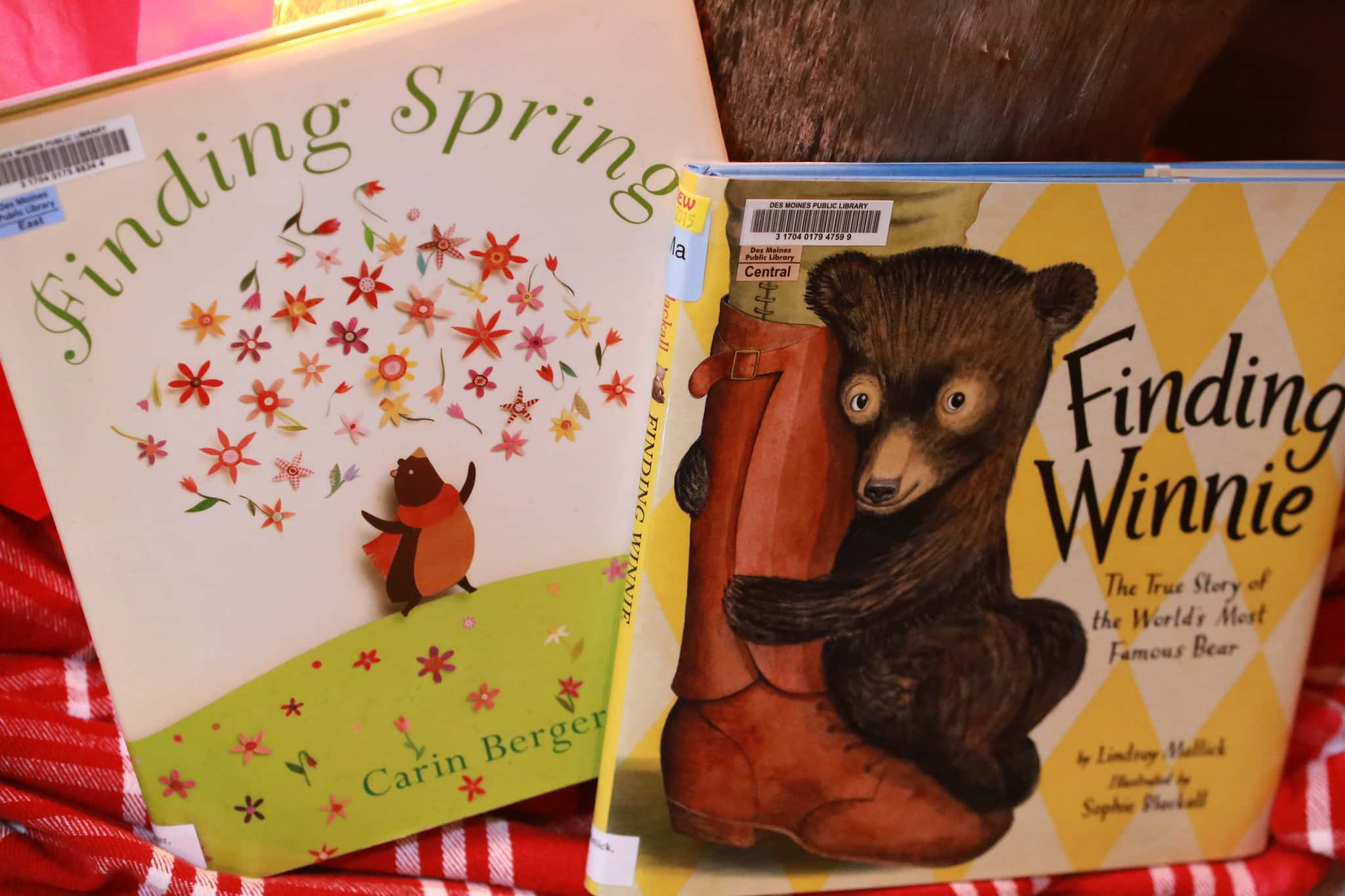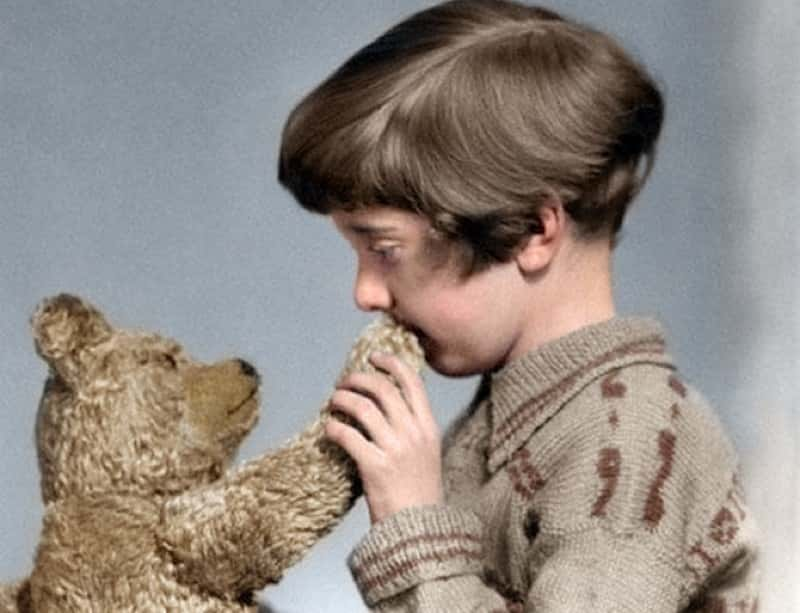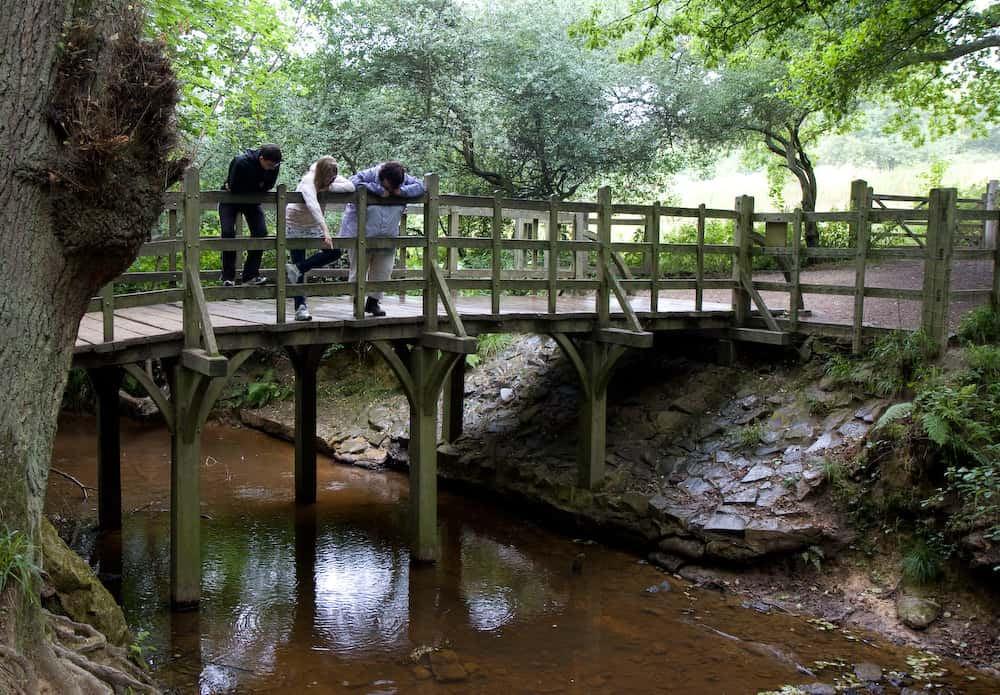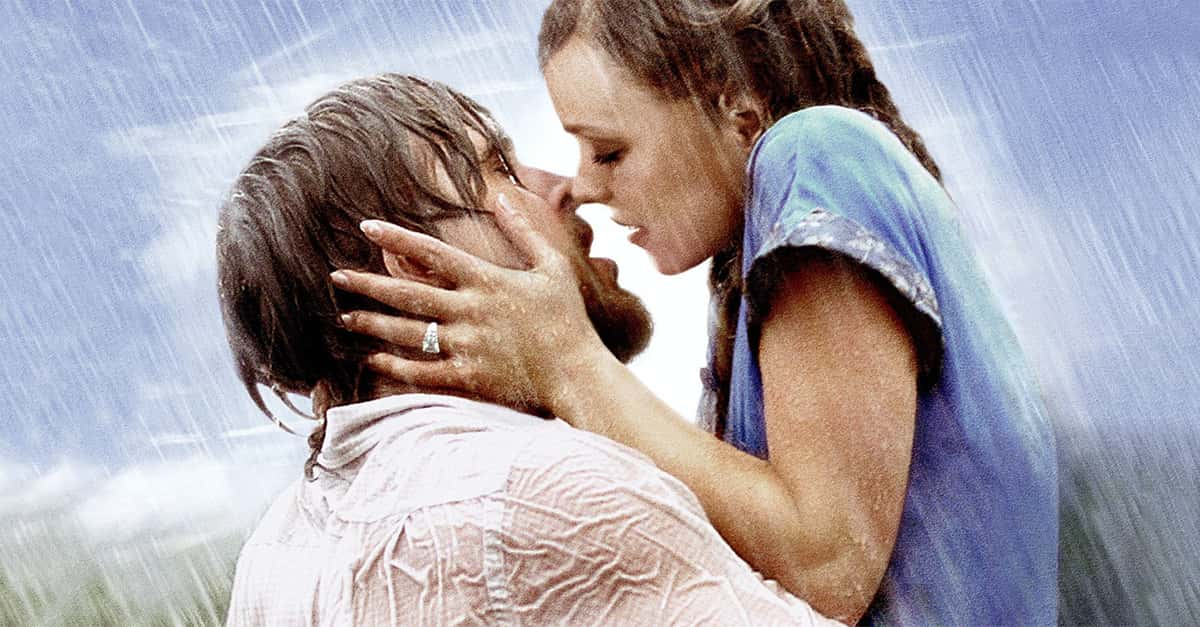"Some people care too much. I think it's called love". —A.A. Milne, Winnie-the-Pooh
This willy-nilly, silly old bear endeared himself to audiences young and old as soon as he made his first appearance in 1924. The Winnie the Pooh universe has since garnered a cult following—and his fame seems to be as enduring as his childlike wonder. Winnie the Pooh’s success has had its peaks and troughs, but a recent poll found that A.A. Milne’s novel persists as the most popular children’s book in the past 150 years. Christopher Robin’s boyhood remains a timeless narrative, a world of merriment and imagination that we never want to leave. And with the cuddly animals of The Hundred Acre Wood manifesting in CGI form in 2018's Christopher Robin, there are still many fans who are in no hurry to grow up.
1. Looking Like A Billion Bucks
While Milne’s net worth is still unknown, the commercial value of Winnie the Pooh media and merchandising is estimated at a whopping $6 billion. In 2002, Forbes ranked Pooh bear as the most lucrative fictional character, with over 50 million copies of his books sold globally. Not too shabby for a Bear with Very Little Brain!
2. A Canadian Patriot
As most Canadians know, Pooh bear was inspired by a proud relic of their national history, a black bear club named “Winnie” that hailed from White River, Ontario. She was orphaned when a hunter killed her mother but luckily, the cub was rescued by Lieutenant Harry Colebourn, who named her after the Canadian city Winnipeg. So contrary to popular belief, the original Winnie bear was not native to her namesake western province.
3. Time For Something Sweet
The real Winnie bear had an appetite for sugary foods, preferring condensed milk over raw meat. True to reality, Pooh bear also has a sweet tooth but craves honey instead. In Winnie the Pooh and the Honey Tree, he even scales a tree to get his paws on the liquid gold, fresh from the hive. After all, “anytime is food time / When you set your clock on Pooh time".
4. A Poster Cub of the Canadian Army
Trained as a veterinarian, it’s no surprise that Colebourn purchased Winnie from the trapper and took her under his care. Once the lieutenant introduced his four-legged companion to his regiment, Winnie immediately lifted morale and captured the affection of the soldiers. As a result, Colebourn’s superior quickly promoted the cub as the regimental mascot of the Canadian Army Veterinary Corps.
5. Just One Of The Guys
During her time with Colebourn’s regiment, Winnie bear provided no shortage of amusement to the valiant but weary men. True to her playful nature, she frolicked and played games with the soldiers, learning to stand on her hind legs and even search for hidden objects. The soldiers embraced her both figuratively and literally, as they would feed Winnie in their arms like an infant.
6. Continuing The Winnie Family Legacy
In 2015, Colebourn’s great-granddaughter Lindsay Mattick carried the torch with Finding Winnie. In the picture book, Mattick narrates a oft-forgotten origin of Pooh’s adventures. She faithfully chronicles her great-grandfather’s wartime adventures, with personal photos and ephemera to do justice to the family history.
7. When Christopher Met Winnie
In the introduction to Winnie-the-Pooh, Milne recalls the time he and his young son crossed paths with Winnie bear, then the main attraction at the London Zoo—an interaction that sowed the seeds of the Hundred Acre Wood. According to Milne, Christopher immediately gravitated to the bears when he entered the zoo: “[W]ith a happy cry of ‘Oh Bear!’ Christopher Robin rushes into its arms".
8. Play In The Real Hundred Acre Wood
The locale of Pooh’s adventures is similarly inspired by Milne’s immediate surroundings, as the Hundred Acre Wood is derived from the Ashdown Forest in East Sussex, England. The wood was a deer-hunting ground in Norman times. In 1925, the author purchased a property on Cotchfield Farm. The Hundred Acre Wood itself is also a fictional descendant of an actual Five Hundred Acre Wood in the forest. Although Ashdown has reduced to heath and fern in the last few centuries, it was a fertile site for Milne’s creativity.
9. Winnie The Who?
As it turns out, “Pooh” was partly invented by the flesh and blood Christopher, who saw a swan on holiday named "Pooh". When Christopher saw Winnie the real bear, he quickly named his teddy bear (who had been gifted to him by his mother) "Winnie" in homage. Putting the two names together makes our beloved Winnie the Pooh.

History's most fascinating stories and darkest secrets, delivered to your inbox daily.
10. Kids Say The Darndest Things
Aside from simply naming his beloved stuffed toys, Christopher was also the imaginative mastermind behind the Winnie the Pooh adventures. He invented voices and personalities whenever he played pretend with his toy collection, and so Milne used his son’s creativity as a springboard for his own stories.
11. Get Your Own Edward Bear
Recently, Merrythought launched a replica of the 1921 Edward Bear for the film Goodbye Christopher Robin. With a golden mohair coat and a height of 18 inches, the Merrythought remake is anatomically identical to the plush bear Christopher cuddled with. The replica sold like hot cakes despite the hefty price tag of $450 USD.
 Goodbye Christopher Robin (2017), Fox Searchlight Pictures
Goodbye Christopher Robin (2017), Fox Searchlight Pictures
12. Winnie,The Muse
In 1924, Milne debuted Edward Bear in his poem “Teddy Bear” in Punch magazine, two years before the book Winnie-the-Pooh was published. In “Teddy Bear,” Milne whimsically describes a bear who—like many of us—struggles with body image issues but eventually embraces his own corpulent figure. Despite feeling inadequate, in the end he is “proud to be short and stout".
13. A Proponent Of Self-Love
As an unapologetic glutton, it’s no surprise that Pooh had once declared, “I am short, fat, and proud of that". A viral tweet by @sryimnate has even hailed the jolly bear as a paragon of self-confidence: “reminder that winnie the pooh wore a crop top w/ no panties and ate his fave food and loved himself and u can too” [sic]. Yes, we stan a body-positive king!
14. Record-Breaking Cartography
Prefacing the books' main action, the map of the “100 Aker” Wood gives readers an aerial view of the landmarks and residents of the enchanted neighborhood. On July 10 this year, E.H. Shepard’s original 1926 drawing was sold for £430,000 ($571,000 USD) at Sotheby’s in London. This denomination is especially impressive since the map was last sold in 1970 for just £1,700, which amounts to roughly £25,500 ($33,800 USD) today. Shepard’s Hundred Acre Wood map broke the record for the highest sum of a book illustration ever auctioned, dethroning only another Pooh drawing. Not too shabby for an imaginary map!
15. From The Big Forest To The Big Apple
Since 1987, Pooh and his woodland friends have been permanent residents of the New York Public Library. Pooh, Piglet, Eeyore, Tigger, and Kanga are exhibited in the Children’s Corner of the library under Pooh and Friends. The display unit is meticulously monitored, with controlled temperature, relative humidity, and light levels. The Pooh and Friends exhibition is available for online viewing via the library’s Digital Collections.
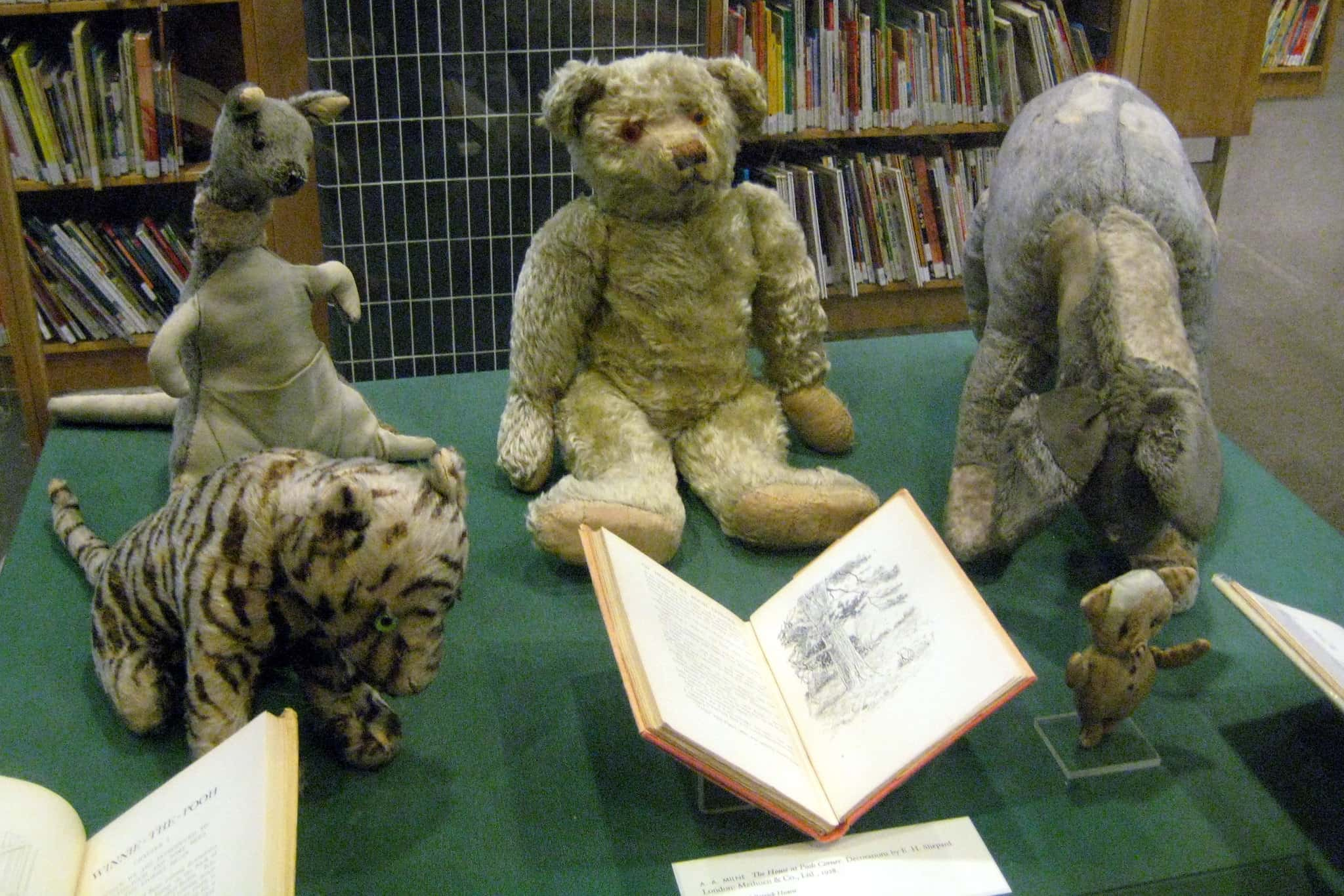 Wikimedia Commons, Wally Gobetz
Wikimedia Commons, Wally Gobetz
16. "Think, think"
With his childish antics and constant wisecracking, it’s hard to imagine Winnie the Pooh as a model of critical thinking. However, Benjamin Hoff shatters these preconceptions with The Tao of Pooh and The Te of Piglet, in which Milne’s stories are appropriated as philosophical parables. In both texts, Hoff borrows the stuffed animals to illustrate fundamental principles and tenets of Taoism, with the aim of illuminating these Eastern paradigms to the Western reader.
17. Art Imitating Life
Christopher Robin’s more sober predecessor is Goodbye Christopher Robin, a biopic released in 2017 telling the story of A.A. Milne’s private life in the wake of Winnie the Pooh’s success. The film focuses on the unsavory side of the author’s illustrious career, particularly Milne’s fissured father-son relationship with Christopher as well as his struggle with PTSD.
 Goodbye Christopher Robin (2017), Fox Searchlight Pictures
Goodbye Christopher Robin (2017), Fox Searchlight Pictures
18. A Fashion Icon
In the original Winnie-the-Pooh book with illustrations, the teddy bear wears nothing but his fuzzy fur suit. His trademark apple-red tee debuted on a RCA Victor picture record in 1932. Disney retained this look when they absorbed the brand, and the red shirt has remained Winnie the Pooh’s wardrobe staple.
19. The Many Voices Of Pooh
Sterling Holloway, Hal Smith, and Jim Cummings are three actors who gave the two-dimensional bear the gift of a goofy, rumbly voice we’ve grown to love. Holloway played Winnie the Pooh from 1966 to 1981 and was recognized as a Disney Legend in 1991, the first recipient of the Voice category. Smith replaced Holloway in 1981 and bestowed life to Pooh until 1988. The incumbent voice actor is Cummings.
20. Hyphens Or No Hyphens?
The silly old bear’s name was originally stylized as “Winnie-the-Pooh” in the Milne books, but Walt Disney omitted the hyphens when he purchased the rights to the character. Milne and Disney were mutual admirers of each other’s work, so Daphne Milne, A.A. Milne's wife, sold the film rights to the cartoon mogul in 1961. Maybe it was the beauty of simplicity, but Pooh’s unhyphenated name stuck and has remained that way since.
21. Poohsticks Olympics
Just as Quidditch became a pastime for us Muggles, Poohsticks has evolved to a real-life sport. Branches are dropped into a stream from one side of a bridge and the first one to appear on the other end is the victor. Poohsticks has even intensified to a competitive level: Oxfordshire hosts a World Poohsticks Championship, an annual event celebrating its 35th anniversary in 2018. The organization’s website also reminds players that plunging into the water is S.A.D.: silly and daft.
22. Big Bear Head
While Pooh bear’s jolly visage has become a well-recognized commodity, the real Winnie’s head spent decades insulated in a museum. When the bear passed in 1934, her skull was transported to the Royal College of Surgeons in London, where it was preserved. Winnie’s skull went on display for the first time in 2015 as part of an exhibition at the college’s resident Hunterian Museum.
23. Is Pooh Mr. Sanders?
The common belief is that the “Mr. Sanders” sign above Pooh’s door refers to the teddy bear himself, but Milne demystifies this rumor in Winnie-the-Pooh. When he says that Pooh lives "under the name of Sanders," “It means he had the name over the door in gold letters and Pooh lived under it". Although the sign has no referent, fans have also speculated that the elusive Sanders was the previous inhabitant—perhaps another woodland creature we’ve yet to meet.
24. The Unbidden Literary Stardom Of Christopher
Although he was a guardian to the stuffed animals, Christopher Milne was like a bear with a sore head when it came to his fame. His resentment ignited when schoolmates teased him with Winnie the Pooh excerpts and his anger only festered over the years. Christopher’s series of autobiographical works seethe with bitterness as he reveals: “It seemed to me almost that my father had got where he was by climbing on my infant shoulders, that he had filched from me my good name and left me nothing but empty fame". The unbridled success of the Winnie the Pooh franchise left an indelible mark on Christopher’s reputation that he believed hindered his adulthood and career. Oh bother!
25. “It’s always sunny day..."
“...when Christopher Robin comes to play,” Pooh bear quips in the trailer for Christopher Robin. The live-action film orbits around an industrious and disenchanted Christopher Robin, now a husband and father. According to Disney, his old pals help him “rediscover the joys of family life, the value of friendship and to appreciate the simple pleasures in life once again". The star-studded cast includes Ewan McGregor as Christopher Robin, Hayley Atwell as his wife Evelyn, and of course, Jim Cummings as Winnie the Pooh. Perhaps the creatures of the Hundred Acre Wood will transport us back to our sunny childhoods too.
 Christopher Robin (2018), Walt Disney Studios
Christopher Robin (2018), Walt Disney Studios
Sources: 1, 2, 3, 4, 5, 6, 7, 8, 9, 10, 11, 12, 13, 14, 15, 16, 17, 18, 19, 20, 21, 22, 23, 24, 25, 26, 27, 28, 29, 30






